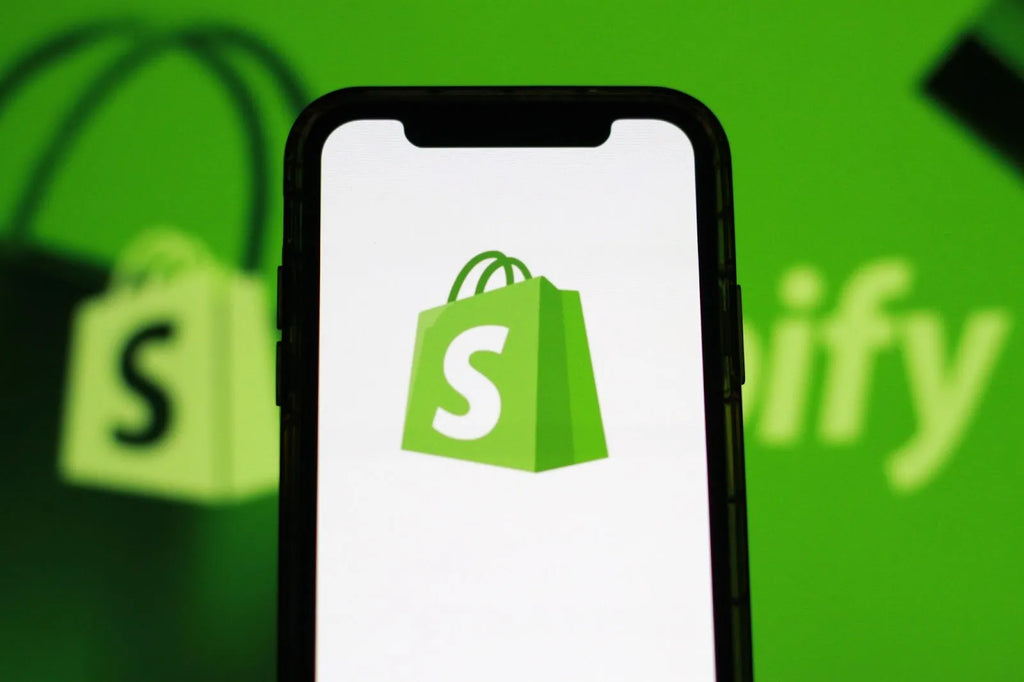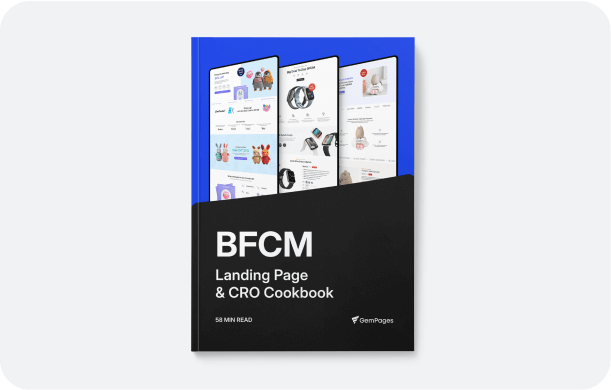The Ultimate Guide to Shopify Price Testing

One subtle price adjustment can have a big impact on your Shopify store’s performance; that is why putting products on sale is not a one-and-done business. While this price tag seems the most ideal at the time, it may need to be changed due to a multitude of internal and external factors. That said, when and how to apply changes that pump up your profit margins? Price testing is the ultimate strategy that will help you answer this very question - all can be found in this blog post.
What is a Pricing Test?
As the term suggests, a pricing test is a strategy that helps you determine the best price points for your products. Once you have got the perfect prices nailed down, the revenue will be maximized as a result.
For instance, a skincare brand aims to run two tests simultaneously to pinpoint whether a limited-time discount will appear more enticing to its customers and thus increase the overall revenue. To do this, the correct strategy is A/B testing and will contain two variants:
-
Variant 1: a serum being sold at $40 (full price)
-
Variant 2: a serum being sold at $60, but is now on sale for $40 (discounted price)
In this test, several metrics can be taken into account, including conversion rate, customer retention, customer lifetime value, and average order value. With this in mind, the results can look like this:
-
Variant 1 has a lower conversion rate but a higher customer retention rate
-
Variant 2 has a higher conversion rate but a lower customer retention rate and customer lifetime value.
This way, the brand has garnered valuable insights into its customers' shopping habits. Ultimately, the right tactic will be applied to reach the final goal.
While this pricing strategy is crowned the most common, other efficient tactics have been proven to help brands spot the best price points. We will get to know them in the next chapter.

4 Types of Price Testing Methods

A/B testing is commonly used by merchants at all stages to keep their stores in check, including price testing.
A/B Testing
A/B testing, as mentioned above, is a straightforward tactic. It consists of two different tests that are conducted at the same time and shown randomly to visitors. In this context, the A/B test is used to monitor price rise/drop, discount vs. no discount offer, and so on. The recorded customer behavior is analyzed for sellers to identify the optimal price that favors conversion rate, revenue, and profit.
More from GemPages: How to Run a Proper Shopify A/B Testing on Your Store?
Multivariate Price Testing
Shopify merchants can take A/B testing up a notch by implementing multivariate price testing - an evaluation that compares two tests by taking multiple factors into consideration at once. Instead of relying solely on prices, this type of test allows sellers to have a more in-depth look into how other elements factor into customer behavior. Thus, prices can be adjusted on a more personal level.
Geographic-Based Testing
This is another clever pricing tactic since it shifts the focus onto the regional demand, currency values, and local competition. For businesses that operate overseas, geographic-based testing could be the MVP to price products in regions with different economic statuses (i.e., North America vs. South Asia). AI-powered apps ensure the consistency of your website versions where various prices are shown based on buyers’ locations.
Time-Based Testing
Time-based testing uses the comparison between two ends of a spectrum to determine the accurate prices at different times. For instance, customer demand can vary between weekdays vs. weekends, winter vs. summer, or the holiday season in general. When an item is in high demand during peak hours, sellers should consider raising the prices to capitalize on this trend.
Benefits of Price Testing for Your Shopify Store

Watch your revenue grow after implementing price testing on your Shopify store.
Maximize Revenue
When you have your product prices under control, the ability to boost your profit margins and maximize revenue are promptly higher. Instead of shooting in the dark by following the competitors or passing market trends, playing by your own rules is the secret to driving sales organically and effectively. Though trials and errors will likely occur during the process, they are the determinants to achieving this very benefit.
Avoid Underpricing and Overpricing
One pricing strategy may work for one but can be detrimental to others, that’s why price testing is vital to avoid this dreaded underpricing/overpricing issue. Remember that each business operates of one’s own volition where a plethora of factors can happen behind the scene, so copying another brand’s pricing tactic is a no-no. Conduct your own price testing to find the Goldilocks zone without underselling/overselling yourself.
Improve Conversion Rates
Online shopping is similar to traditional shopping due to how customers navigate through the conversion funnel. Once they have taken an interest in your products, what keeps them on your site longer is the price tags. This means if visitors feel like they can get a bang for the buck elsewhere, they will feel more inclined to click off your site, increasing the bounce rate. Price testing can prevent this from happening by giving a benchmark on how to properly price products, thus guiding buyers to the end of the conversion funnel.
Get Valuable Customer Insights
The data taken from the pricing tests directly tells merchants how their store is performing, whether via conversion rate, average order value, revenue per visitor, churn rate, or feedback. This information has a significant impact on which step to take next to ensure consistent pricing control, as well as the sellers’ decisions in other aspects of their businesses in the long run.
Have a Competitive Edge
A brand can shine the brightest among the crowd thanks to their innovative products, creative marketing, or simply by having a clever pricing strategy. This does not always equate to offering the lowest prices on the market, but rather a reasonable price range that matches the products’ quality. By doing this, you are guaranteed more sales and customer loyalty at the same time.

A 6-Step Guide on How to Set Up Price Testing on Shopify

Set up price testing for your Shopify store seamlessly with our tutorial.
Price testing begins from the moment you pick your product to the post-launch maintenance. Follow this guide to hit the ground running and receive insightful results from this tactic.
Step 1: Pick the Products for Price Testing
Flip through your catalog and pick one product suitable for a pricing test. This could be a best-seller, a niche item exclusive to your brand, products with elastic demand, or a high-margin product that seems to tolerate a subtle price increase. Avoid low-traffic products as they do not garner enough traffic to properly generate insightful data.
Step 2: Define Your Goal and Timeline
The two most important factors are the goal and duration. For example, set a goal to detect the price that generates the most revenue in three months. These keywords enable you to focus on one specific area instead of trying to cover everything in regard to pricing.
Step 3: Choose a Price Testing Method
The price testing method largely depends on your goal since different types can churn out different results. For a greenhorn business, it is advised to go with a typical A/B test where the focal point is the price. On the other hand, large-scale companies are welcome to carry out tests that touch on other elements (location, time, etc.) to attain a more comprehensive report.
Step 4: Use a Shopify-supported App

Dexter is a Shopify-supported app that specializes in A/B price testing.
If you are already operating on Shopify, consider yourself lucky for the abundance of supported apps that this platform has to offer. In this era of digital assistance and artificial intelligence (AI), these tools are designed to automate and streamline the pricing tests. Dexter is a prominent name among Shopify users due to its foolproof interface, while Intelligems leverages AI to optimize your pricing plan to a T. Explore more community-approved apps on the Shopify App Store.
Step 5: Launch Your Test
When it comes time to launch your test, be sure that all the information is correct, each variant can be loaded, the duration is right, and the tool works accurately to record every site movement. Depending on the actual performance, the test can be extended or cut back as long as there is a sustainable amount of data available for assessment.
Step 6: Receive Insights and Analyze
The result needs to be evaluated not only at the end of the test but throughout the procedure as well. Follow your initial plan to answer questions such as “How many transactions are there per day?”, “What are the customers’ reaction to the changes?”, and the like. Apart from the shopping behavior on your website, observe customer feedback on social media and via the support channels as well. Should there be any negative reception, consider tweaking the test to deliver what your customers want.
Once the final result is in, this is when you ought to make a decision to either keep the original price or increase/decrease it. The apps often come with private consultation or a recommendation on which direction to go next after this point.
Do’s and Don’ts of Price Testing on Shopify
|
Shopify Price Testing Do’s |
Shopify Price Testing Don’ts |
|
Pinpoint your main goal |
Change prices too frequently |
|
Leverage third-party tools |
Overuse of underpricing to attract customers |
|
Make use of psychological pricing |
Test without enough traffic |
|
Only test one variable at a time |
Get too influenced by competitor pricing |
|
Take all the market fluctuations into account |
Stop testing after one experiment |
Wrapping Up
Similarly to any other aspect, price testing is the reason why running an online business is an ongoing commitment. Knowing when to raise or lower the prices is the key to holding the reins and maintaining a thriving business, especially on a fast-paced platform like Shopify. We hope that this guide has managed to provide all the nitty-gritty needed for you to tackle this strategy fearlessly.




 Facebook Community
Facebook Community Change Log
Change Log Help Center
Help Center









